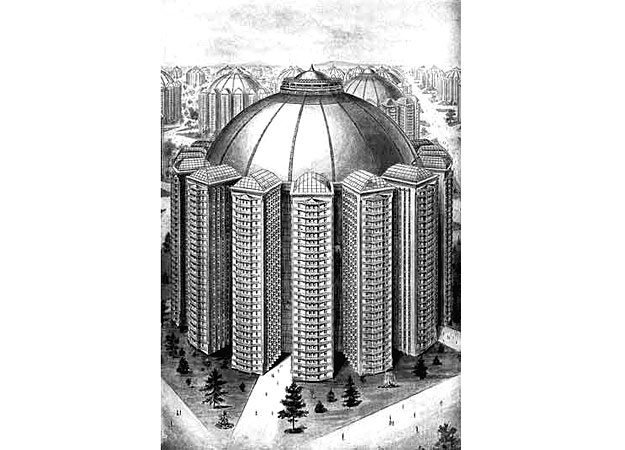|
LITR 5439 Literary & Historical Utopias |
|
Munira Omari
July 6, 2013
Oryx and Crake:
A Dystopian Novel?
From the beginning of my journey through utopian literature, I have been aware
of many dystopian genres, mostly in movies. However, through taking this course,
I can openly say that I have learnt new and fascinating things about utopian
genres as well. It was quite easy for me to distinguish the two because of the
obvious differences between them with the help of the objectives and conventions
provided. Utopia by Thomas More is a
clear example of his ideal thought of a utopia; whereas,
Anthem by Ayn Rand is an open
dystopian reality. Another example of a dystopia is
Oryx and Crake by Margaret Atwood. It
is not quite clear if this novel is a utopian novel with its specific style and
plot because utopia is generated from the science fiction genre; whereas
Oryx and Crake is of a different
genre (speculative fiction). However, I disagree. Even though Oryx and Crake
might not be a typical utopian fiction novel, it materializes conventions that
classify it as one in comparison to other utopian texts, as well as its
applicability in teaching it in school curriculums and in university-level
seminars for its rich commentary.
As mentioned in the previous paragraph,
Oryx and Crake is not a typical utopian novel. However, it contains many
conventions that allow us to classify it under the utopian genre. The main
convention seen in her novel is the setting. In that fictitious world, or what
Atwood might believe it to be our future world, has two separated lands: the
pleebland and the privileged compounds. It is understood that the pleeblands are
the dystopian world in the novel and the privileged compound is the utopian
world in the novel. This convention is seen in other utopian and dystopian
novels; for example, Utopia is a
perfect world located on an island separated from the rest of corrupted human
societies. Another example is Anthem,
in which there is no longer a utopian society. It has been separated physically
by time from a utopian society. This separation of two worlds or utopia and
dystopia is essential for the survival and the inception of the other. However,
in both Anthem and
Oryx and Crake the previous utopia or
world has seized to exist because of its fall and technological corruption.
Aside from the setting of utopian novels we have the hero figure. The hero
figure is another convention familiar in utopian novels, especially dystopian.
The savior is also seen in Anthem,
where Prometheus escapes from a communal world and takes his beloved Gaea with
him to start a new life. This can also be blended into the idea of a journey
that utopian novels tend to express. In
Oryx and Crake, there is Snowman who is the leader of the Crakes and he
feels obligated to save them as did Prometheus to his people. With this in mind,
I find myself returning to my midterm assignment in which I explained that the
hero-like figure is an essential mode for the improvement in our society. It is
an ideal genre for younger readers, especially high school students, because
they tend to feel entrapped and lost in an adult-controlled world; thus this
genre will give them the stimulation to read and learn fiction
literature and at the same time (objective 1e) understanding the corruption that
the world might come to if continued on the same path. And I think that Atwood
focuses on that matter and provides probable results. With a hero-like figure in
the novel, students can communicate and relate to him or her, thus expanding
communication; and instead of her novel causing boredom or confusion, it is
entertaining and educating them (objective 1e) with active discussions and
moments of enlightenment.
Because of the uniqueness of her plot in
Oryx and Crake, she successfully
supplies the reader with a genre blending undertone. This type of genre blending
stimulates various discussions on the applicability of it while creating
motivation for further discussion. Margaret Atwood does a fascinating job with
blending multiple genres together to the point of almost creating a new one. She
uses the novel, propaganda, sf, and Socratic dialogue in one well put utopian
novel (objective 1b). It might seem odd to mention the propaganda genre;
however, I see it to be fitting with the undertone of her work. For one, she
narrates a background story of the utopia turned dystopia because of technology.
Through her work, she has predicted possibilities of what might happen if we
proceed with our unnatural experimentations on animals and human beings. And
thus I believe Oryx and Crake is an
underlying propaganda. In spite of genre blending that Atwood uses in her novel,
she seems to have executed it well. The readings we had in this class seem to
all have been one genre, either propaganda such as
Utopia or romance and adventure in
Anthem.
With the end of the semester, I have felt that because of the lack of time, we did not give Oryx and Crake its fair share of discussion. It is a thick novel with plenty of ideas to discuss; however, it seems to be a good novel to read at a university seminar level because it is rich with the style and genre-blending uniqueness that expands the critical minds and the potential of involving more speculative fiction novels.

